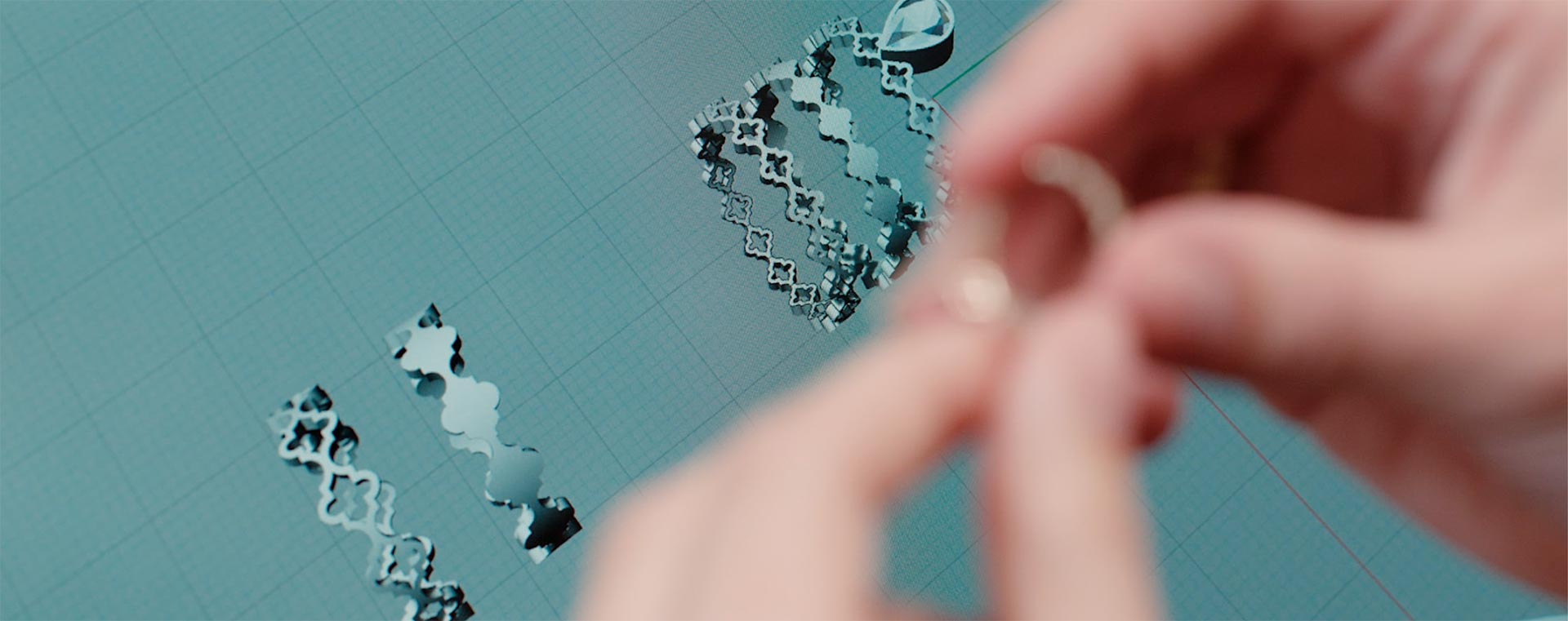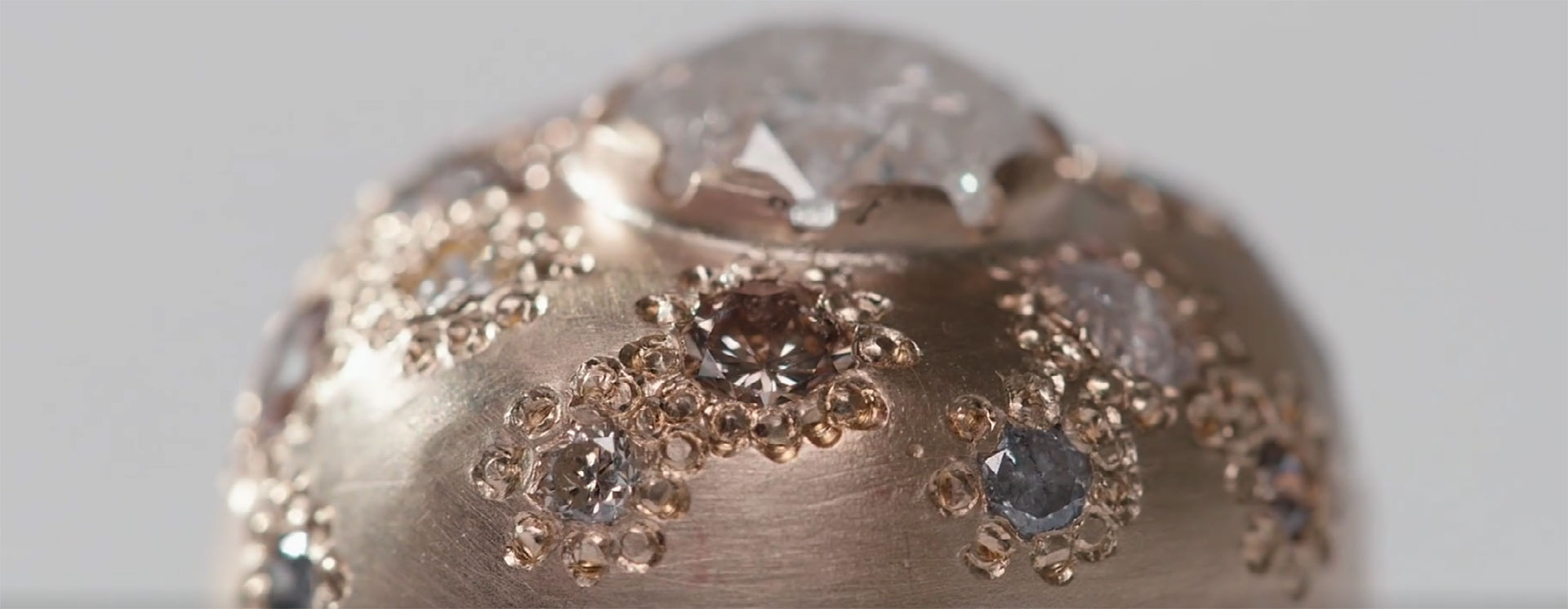Inspirations
Like a travel journal in continuous progress, the jewellery's engravings and ornamental patterns are impressions of lacework, embroidery, carvings on the doors of havelis in Rajasthan, or the labyrinthine arabesques of Middle Eastern palaces that possess the enchantment of a thousand and one nights. Patterns can also come from mosaics and ancient ceilings of baroque, Gothic and Romanesque churches in Italy, the chains of incense censers, the rose window of a portal in Cairo, hortensia buds and the special shells found on Sanibel Island in Florida.

Our gold
Agapanthus uses mainly 18 karat white gold without rhodium plating for its unique pieces. Its neutral
appearance marries well with the warm tonalities and variety of hues of the selected gems.
For classic models, especially the ones mounted with semi-precious stones cut by expert artisans, Agapanthus
uses 9 karat yellow or pink gold, for its more subtle colouring than 18 karat yellow or pink gold. It
spotlights the particularities of the gems.

3D computer-aided design
Rhinoceros, a commercial 3D computer graphics software, is often used for the rapid prototyping of jewellery designs. It creates extremely precise drawings that are impossible to make by hand. Aided by a goldsmith or stone setter, the designer can create models on the computer. These can be 3D printed in resin or wax and used for lost-wax casting or for the creation of moulds. The obtained fully functional jewellery is finished by hand by goldsmiths, stone setters and engravers who transfer their unique touch to the pieces.
Wax modelling
Wax modelling is one of the most ancient techniques to make organically shaped and figurative metal objects that are impossible to construct from sheet and wire. Different forms of wax blocks are used according to the piece being crafted. Wax tubes are used for rings and bracelets. Sheet wax and wax profile wire are used for other items. Wax carving is like making a sculpture in stone. Starting with a lump of material, excess matter is removed until the finished object is obtained. A detailed, two-dimensional drawing of shapes and thicknesses is transferred to the wax using an awl. A milling cutter, file, brush and scalpel are used to refine the geometric design until a full relief surrounded by a rough surface is obtained. The latter is smoothed with sandpaper and nylon cloth. The piece can now be casted in the chosen type of metal applying the process of lost-wax casting.
Lost-wax casting
Lost-wax casting is the oldest technique used for the production of statues and other objects. It was invented in the Bronze Age. In gold smithery, the process is quicker and more direct, seeing the small dimensions of the items. Models made by hand or by 3D printing are connected to groups of wax branches (which will become metal sprues) to create wax trees that are placed in metal cylinders. Liquid plaster is poured into the cylinder. After the plaster hardens and sets, it is heated so that the wax inside can exit the channels that were created beforehand, leaving a precise mould of the object. Molten metal of the chosen alloy is poured inside the mould. The block of plaster is broken away to retrieve the metal objects. They are cut off the central sprue by wire-cutters or bow-saw. The jewellery is then ready to be polished, engraved or set with gems.
